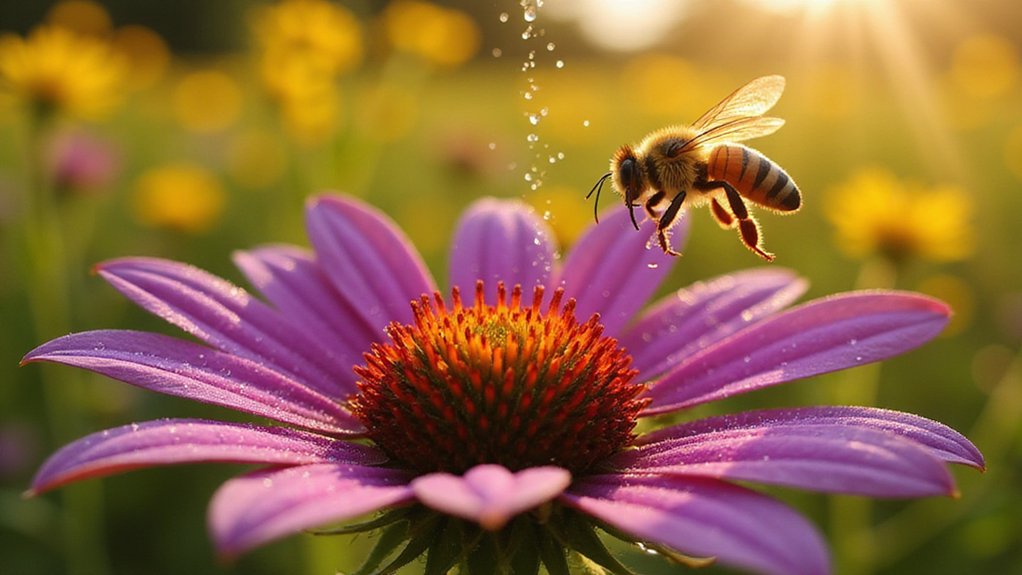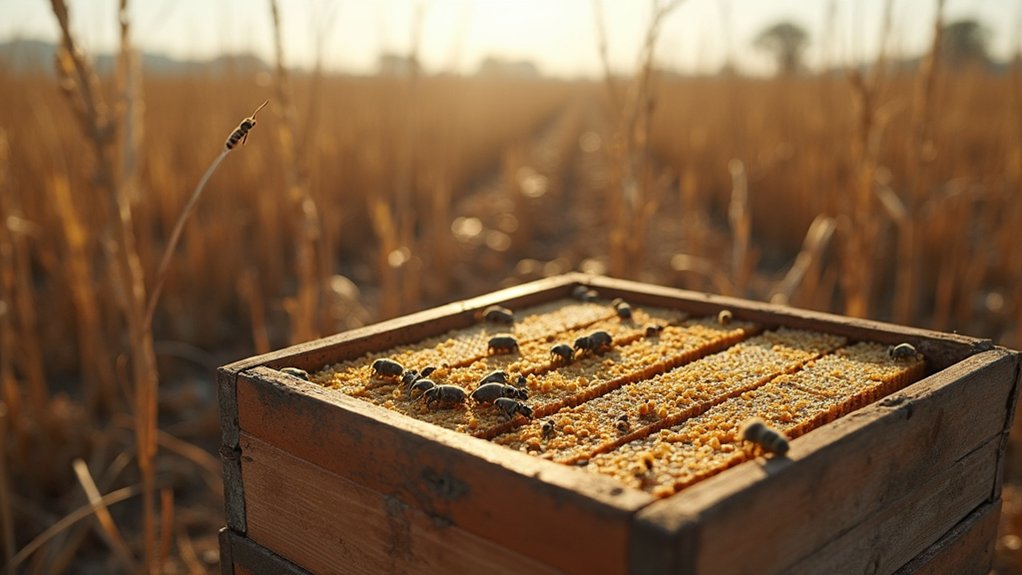The dance between flowers and bees represents one of nature’s most fascinating partnerships. Recent discoveries suggest that flowers don’t just passively wait for bee visitors—they actively respond to them. Flowers appear to “listen” for the buzzing sounds of approaching bees and can sweeten their nectar within minutes to welcome these important pollinators.
In nature’s grand ballroom, flowers wait not passively but actively listen for their buzzing partners, sweetening nectar to welcome their approach.
This remarkable relationship involves sophisticated communication systems on both sides. Bees use four main methods to communicate with each other: food sharing, dances, pheromones, and vibration including sound. When a bee finds a good food source, it performs special dances to tell other colony members exactly where to find it. The waggle dance behavior communicates precise directions relative to the position of the sun.
Flowers, for their part, have evolved clever ways to attract and guide bees. They display ultraviolet patterns called nectar guides that are invisible to humans but act like landing strips and treasure maps for bees. These guides direct bees precisely to where nectar is located within the flower.
Scientists have discovered that bees can even detect electric fields using their antennae. This ability adds another dimension to how they find and identify flowers. When a bee approaches a flower, the electric interaction between them may help the flower detect the bee’s presence, triggering the nectar-sweetening response. Additionally, the difference in electrical charge allows pollen to jump from the negatively charged flower to the positively charged bee during visits.
The relationship between flowers and bees illustrates a delicate balance between private and shared information. Bees can rely on their own memory of good feeding spots or follow directions from hive mates. Which strategy works best depends on the environment and how nectar is distributed among flowers.
Honey bee colonies function as complex superorganisms with one queen, hundreds of drones, and tens of thousands of worker bees. Their sophisticated communication methods guarantee the colony operates smoothly as a unified entity despite consisting of thousands of individuals.
This remarkable system of communication between flowers and bees has evolved over millions of years, creating one of the most important ecological relationships on our planet. When flowers “listen” and respond to their pollinators, they’re participating in an ancient conversation that helps both species thrive.
References
- https://pmc.ncbi.nlm.nih.gov/articles/PMC5599473/
- https://www.irrelevantmatters.com/the-hidden-language-between-flowers-and-bees/
- https://askabiologist.asu.edu/honey-bee-communication
- https://people.seas.harvard.edu/~jkwerfel/ants10bailis.pdf
- https://resources.beesfordevelopment.org/rc/bee-communication/








